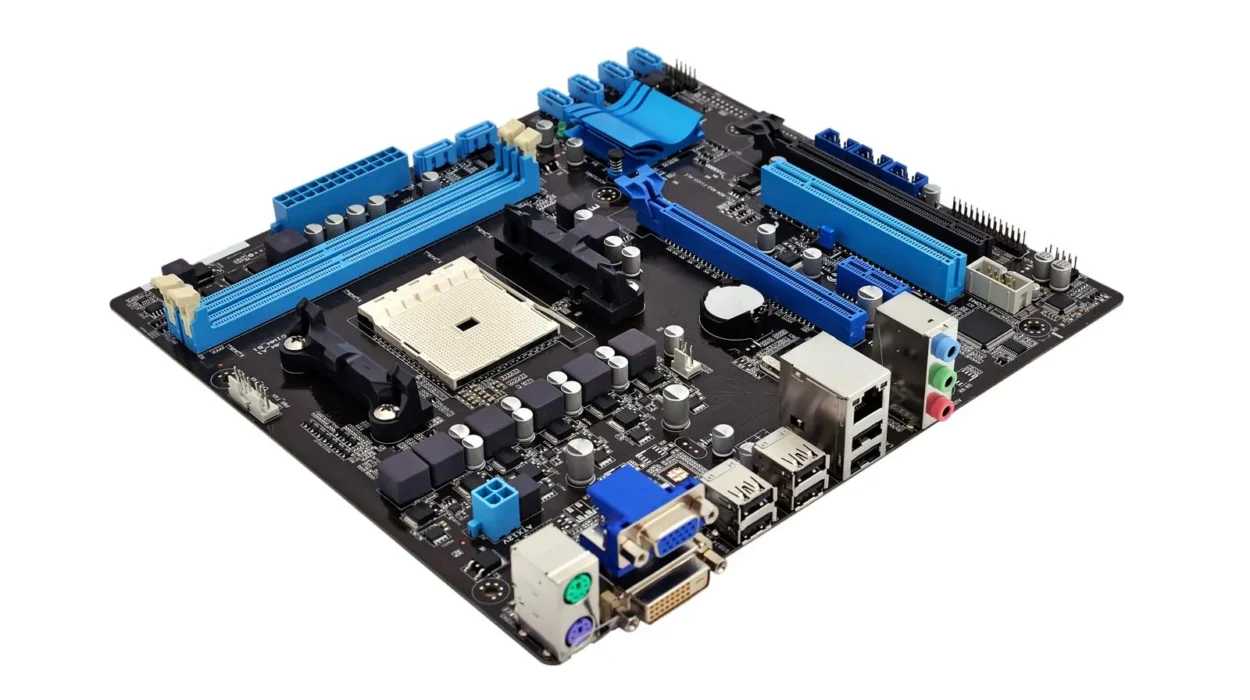In the interconnected digital world, where data and services flow seamlessly across continents, the ability to access online resources is taken for granted. Yet, beneath this convenience lies a constant threat: the Denial-of-Service (DoS) attack. This form of cyber assault doesn’t steal information or infiltrate systems to plant malicious code. Instead, it disrupts availability—the fundamental principle that ensures systems remain functional and accessible when needed. A well-executed DoS attack can cripple websites, paralyze businesses, and even disrupt critical infrastructure. Understanding how these attacks work, why they occur, and how to prevent them is vital for maintaining the stability and resilience of digital systems.
Understanding the Concept of Denial-of-Service
At its core, a Denial-of-Service attack seeks to make a network resource—such as a website, server, or online service—unavailable to its intended users. It achieves this by overwhelming the target with an excessive amount of traffic or triggering conditions that exhaust its resources, causing the system to slow down, crash, or stop responding altogether.
The term “denial of service” is descriptive: it denies legitimate users access to a service. While some attacks exploit software vulnerabilities to crash systems, most rely on sheer volume, flooding the target with more requests than it can handle. For example, a website designed to process 10,000 requests per second might suddenly face 10 million malicious requests, forcing it to allocate all its bandwidth and computational power to responding to bogus traffic.
A simple analogy illustrates the concept. Imagine a restaurant that can seat fifty customers. If hundreds of prank callers continuously reserve all the tables but never show up, genuine diners are unable to eat there. The restaurant remains intact—no damage to its structure or staff—but it becomes effectively unusable. That’s the essence of a DoS attack: preventing legitimate access by consuming available capacity.
The Evolution of DoS Attacks
Denial-of-Service attacks date back to the early days of the internet, long before cybersecurity became a mainstream concern. The earliest known incidents in the 1990s targeted university networks and small online communities. These primitive attacks often relied on exploiting weaknesses in the Transmission Control Protocol (TCP), sending malformed packets that caused systems to crash or hang.
As the internet evolved, so did the scale and sophistication of DoS attacks. By the late 1990s and early 2000s, distributed denial-of-service (DDoS) attacks emerged. In these attacks, multiple systems—often compromised computers known as “bots”—work together to flood a target simultaneously. This distributed model magnified the potential impact, transforming DoS attacks from minor disruptions into global threats.
Today, DoS attacks can leverage millions of devices across the world, including not only traditional computers but also smartphones, routers, and Internet of Things (IoT) gadgets. The Mirai botnet, for instance, famously hijacked IoT devices such as cameras and DVRs to launch record-breaking attacks in 2016, taking down major services like Twitter, Netflix, and PayPal. The evolution from isolated single-source attacks to massive distributed operations represents one of the most significant shifts in the history of cybercrime.
The Mechanics of a DoS Attack
To grasp how a DoS attack functions, it’s essential to understand the flow of data on the internet. Every online service relies on a server that listens for incoming requests and responds accordingly. When you visit a website, your browser sends a request to the server hosting that site. The server processes the request, retrieves the necessary data, and sends it back.
A DoS attack disrupts this normal flow by sending an overwhelming number of requests or by exploiting vulnerabilities that cause the server to consume excessive resources. The attacker’s goal is not necessarily to hack the system but to exhaust its capacity—bandwidth, CPU power, memory, or application-level limits—so that legitimate users can’t access it.
There are generally two fundamental approaches to achieving this goal. The first is volume-based attacks, which focus on flooding the target’s bandwidth. The second is protocol or application-level attacks, which target specific weaknesses in the communication or software logic.
For instance, a flood attack may involve sending a massive number of network packets to saturate the target’s bandwidth. Once the incoming traffic exceeds the system’s ability to process or respond, it effectively becomes unreachable. In contrast, application-level attacks may exploit flaws in web servers or database queries, forcing the target to spend significant computational resources handling malicious requests.
Types of Denial-of-Service Attacks
While DoS attacks share a common goal, their methods vary widely. The diversity of techniques reflects both the evolving sophistication of attackers and the layered nature of modern network architectures.
One common form is the ICMP flood, which exploits the Internet Control Message Protocol used for diagnostic functions such as “ping.” In an ICMP flood, the attacker sends a deluge of echo request packets to the target, forcing it to reply to each one until its processing capacity is exhausted.
Another classic technique is the SYN flood, which targets the TCP handshake process. When two devices establish a connection, they exchange synchronization (SYN) and acknowledgment (ACK) packets. An attacker can exploit this process by sending a stream of SYN requests but never completing the handshake. The server, waiting for the final acknowledgment, keeps these half-open connections in memory, consuming resources until it can no longer accept new ones.
UDP floods are another variation. Since the User Datagram Protocol (UDP) is connectionless, it doesn’t require a handshake. Attackers can send large volumes of UDP packets to random ports, forcing the target to check for applications listening at those ports and respond with error messages. This consumes both processing and bandwidth resources.
Application-level attacks, such as HTTP floods, mimic legitimate user behavior. They send valid HTTP GET or POST requests, forcing the web server to load dynamic pages or execute database queries repeatedly. Because these requests appear normal, they are much harder to filter out using standard firewalls.
Other variants, such as slowloris attacks, maintain numerous open connections by sending partial requests slowly. This ties up resources while staying below detection thresholds, causing servers to become unresponsive without ever reaching traffic volume limits.
Distributed Denial-of-Service (DDoS)
The rise of distributed computing made it possible for attackers to amplify the impact of DoS attacks exponentially. A Distributed Denial-of-Service (DDoS) attack employs multiple systems to target a single victim simultaneously. The distributed nature makes the attack harder to trace and significantly more powerful.
To conduct a DDoS attack, attackers often build or rent a network of compromised computers known as a botnet. These bots—infected with malware—await commands from a central controller. Once activated, the botnet can direct all its nodes to flood a specific target with traffic. Because requests come from numerous legitimate IP addresses spread across the globe, distinguishing between malicious and real traffic becomes extremely difficult.
Botnets can range from a few thousand to millions of devices. The Mirai botnet mentioned earlier is one of the most infamous examples. By exploiting weak passwords on IoT devices, its creators assembled an army of connected cameras and routers that unleashed traffic volumes exceeding one terabit per second—enough to cripple major internet infrastructure providers.
Modern DDoS attacks often use reflection and amplification techniques. Attackers send small requests to misconfigured servers (like DNS or NTP servers) with the victim’s IP address spoofed as the source. The servers then send much larger replies to the victim, effectively multiplying the attack’s strength. This approach allows attackers to maximize output while minimizing their own bandwidth use.
The Role of Botnets and IoT in Modern Attacks
The proliferation of internet-connected devices has created a vast attack surface. IoT devices—ranging from smart home appliances to industrial sensors—often lack proper security controls. Default passwords, outdated firmware, and insecure protocols make them easy targets for malware that recruits them into botnets.
Once compromised, these devices operate silently, participating in coordinated DDoS attacks without their owners’ knowledge. Unlike traditional computers, IoT devices are rarely monitored, meaning infections can persist indefinitely. The result is a permanent, distributed weapon capable of launching attacks on demand.
Botnet control mechanisms have also become more sophisticated. Early botnets relied on centralized command-and-control (C2) servers, but these were vulnerable to shutdowns. Modern botnets use decentralized communication channels such as peer-to-peer networks or blockchain-based systems, making them nearly impossible to dismantle.
As 5G networks and edge computing continue to expand, the number of connected devices will grow exponentially. Without strong security standards, this expansion could lead to an unprecedented increase in the potential scale of DDoS attacks.
The Impact of DoS Attacks
The consequences of a successful DoS attack can range from minor inconvenience to catastrophic disruption. For individuals, it may mean temporary unavailability of a website. For businesses, it can result in lost revenue, damaged reputation, and legal liabilities.
E-commerce platforms are particularly vulnerable. Even a brief outage can lead to significant financial loss as customers are unable to make purchases. In the financial sector, downtime can interrupt transactions, affecting markets and consumer trust. For critical infrastructure, such as healthcare or energy, DoS attacks can endanger lives by disabling essential services.
Beyond direct financial damage, DoS attacks can serve as a smokescreen. While defenders focus on restoring availability, attackers may exploit the distraction to conduct secondary operations, such as data theft or network infiltration. In some cases, DDoS attacks have been used as a diversionary tactic in multi-stage cyber operations.
On a geopolitical level, nation-states have used DoS attacks as tools of digital warfare. They can disrupt communications, disable government services, or signal political intent without direct physical aggression. The attacks on Estonian infrastructure in 2007, widely attributed to politically motivated actors, demonstrated how DDoS can serve as a weapon in cyber conflicts.
Detection and Diagnosis
Identifying a DoS attack in progress requires careful monitoring of network traffic and system behavior. Typical signs include sudden spikes in traffic, abnormal resource consumption, or degraded service performance. However, distinguishing between a legitimate traffic surge—such as one caused by a viral marketing campaign—and a malicious flood is often challenging.
Network administrators rely on real-time analytics and anomaly detection systems to identify suspicious patterns. Deep packet inspection tools can analyze traffic at a granular level, revealing abnormal packet rates, repetitive source addresses, or spoofed headers. Flow-based monitoring systems, such as NetFlow or sFlow, provide visibility into bandwidth utilization and connection trends.
In more advanced setups, machine learning algorithms analyze historical data to establish baselines of normal behavior. When deviations occur—such as an unexpected increase in requests from specific regions or protocols—the system raises alerts. Early detection is crucial, as it allows organizations to mitigate the impact before the attack escalates.
Mitigation Strategies
Defending against DoS attacks requires a multi-layered approach. Traditional firewalls and intrusion detection systems are often insufficient because they cannot handle large volumes of traffic or differentiate between legitimate and malicious requests effectively.
One of the most common defenses is rate limiting, which caps the number of requests a single client can make within a given time frame. While this can mitigate small-scale attacks, it may not withstand distributed assaults where requests come from thousands of different sources.
Content Delivery Networks (CDNs) offer an additional layer of protection by distributing traffic across multiple geographically dispersed servers. By absorbing the load, CDNs can prevent single points of failure. Similarly, load balancers can distribute requests evenly among multiple servers, ensuring that no single node becomes overwhelmed.
More advanced solutions involve scrubbing centers—specialized facilities that filter incoming traffic to remove malicious packets before they reach the target. Internet service providers (ISPs) often collaborate with such centers to reroute and clean traffic during large-scale attacks.
Cloud-based DDoS protection services, such as those provided by major cloud vendors, can dynamically scale resources to absorb large traffic surges. They also employ behavioral analysis and signature-based detection to block known attack patterns.
Ultimately, effective defense depends on preparation. Organizations must develop incident response plans, conduct stress testing, and maintain redundant infrastructure to ensure continuity during attacks.
Legal and Ethical Dimensions
The legal framework surrounding DoS attacks varies across jurisdictions, but most countries classify them as serious cybercrimes. In the United States, for example, DoS attacks fall under the Computer Fraud and Abuse Act, which carries severe penalties including imprisonment.
However, enforcement remains challenging. Attackers often operate across borders, using anonymization techniques and compromised systems to hide their identities. International cooperation is essential but difficult due to differing legal systems and priorities.
Ethical debates also surround “hacktivism”—politically motivated DoS attacks conducted as forms of protest. Groups like Anonymous have used DDoS campaigns to target corporations and governments, framing them as acts of digital civil disobedience. Yet, even when motives are ideological, such actions remain illegal and can have unintended consequences, including collateral damage to unrelated systems and users.
The Future of DoS Attacks
As technology advances, so too will the capabilities of DoS attackers. The emergence of 5G networks, edge computing, and autonomous systems will expand both the scale and complexity of potential attacks. Future DoS campaigns may target not only servers and websites but also smart cities, self-driving cars, and industrial automation systems.
Artificial intelligence will likely play a dual role in this evolution. On one hand, attackers could use AI to identify vulnerabilities, coordinate botnets, and dynamically adapt strategies to bypass defenses. On the other, defenders will deploy AI-driven detection systems capable of learning from each attack and responding in real time.
Quantum computing, though still emerging, may eventually alter encryption and authentication models that underpin internet traffic. This shift could introduce new opportunities for both attackers and defenders in the realm of denial-of-service strategies.
Conclusion
Denial-of-Service attacks represent one of the most enduring and disruptive forms of cyber aggression. Their strength lies not in technical complexity but in their ability to exploit the very openness of the internet. From early single-source floods to today’s massive distributed botnets, the underlying principle remains the same: deny legitimate users access by overwhelming resources.
Defending against DoS attacks requires vigilance, preparation, and layered security. It also demands global cooperation, as no single entity can combat the scale of modern threats alone. The battle between attackers and defenders is a constant race, one where innovation on both sides drives the evolution of cyber resilience.
Ultimately, the lesson of DoS attacks extends beyond technology. It underscores the fragility of connectivity and the importance of designing systems not just for performance, but for endurance. In a world that increasingly depends on uninterrupted digital access, understanding and mitigating denial-of-service threats is not merely a technical necessity—it is a foundation of digital stability itself.






